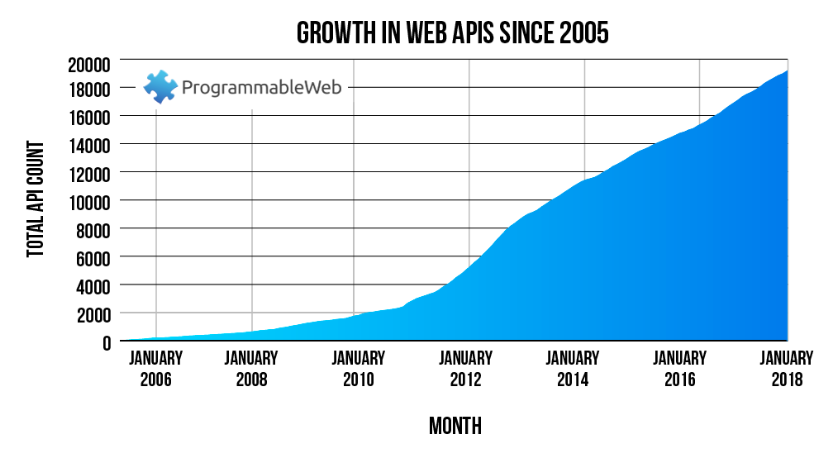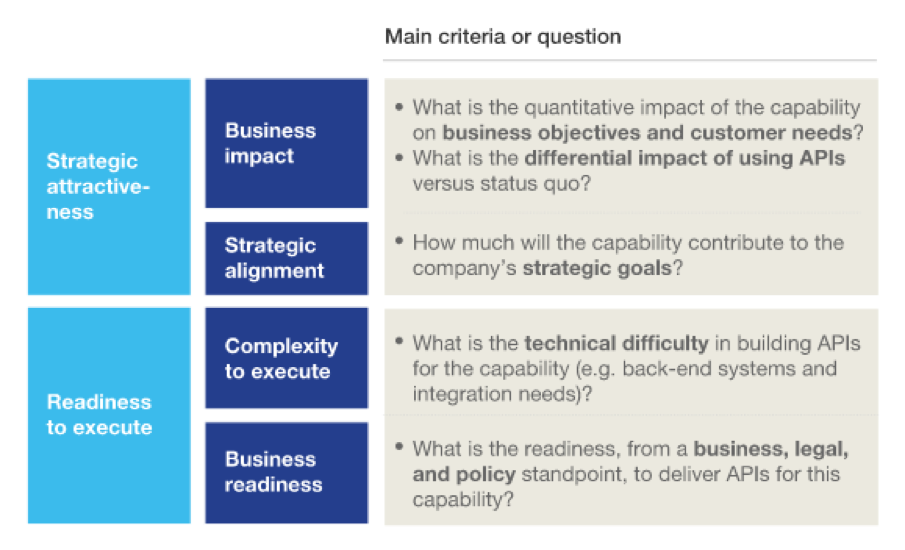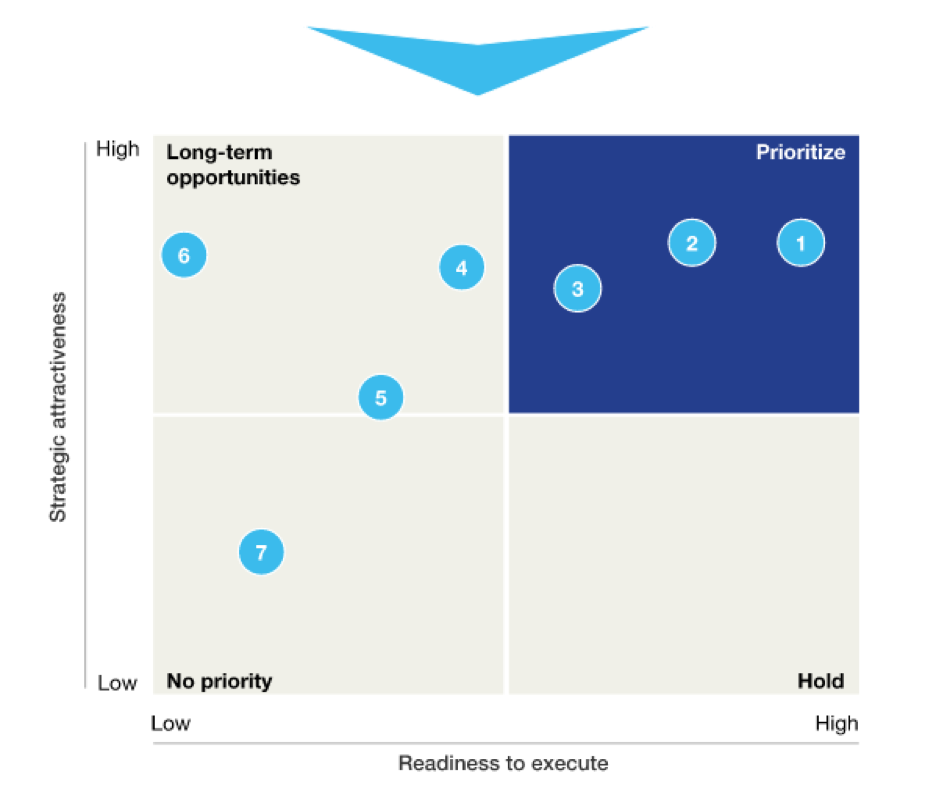Hence, it is essential for companies to implement a strategy to drive down dependence on external software and establish APIs that can be molded and adapted to the business’ needs. This allows for greater internal flexibility, while establishing new means of connecting and interacting with clients and vendors externally via apps, websites and marketing tools. Businesses can thus ensure that their operations remain ordered as well as dynamic.
More than enough reasons
Companies that use APIs are able to capitalize on what other companies can offer in the shape of services, data, algorithms and general functionalities. The cost of incorporating an external API within a platform is always lower than developing a new API from zero, and it also avoids having to reinvent the wheel. The Programmable Web directory currently features more than 18,000 APIs, the largest repository of its kind in the world.

Source: ProgrammableWeb.com
Establishing an API strategy for your business means establishing a base from which new business branches can be extended. Your website can quickly be turned into a mobile app and your client acquisition data can be transformed into marketing tools. And if you internally measure how your tools are used by your employees, you can identify means of optimizing day-to-day workflows or find productivity gaps. Without a coherent API strategy, you are losing data.
“Those companies that establish the most robust and advanced APIs offer a superior user experience”
According to Freeform Dynamics, three quarters of the IT departments at companies surveyed in 2015 used APIs to create their web pages (70%), integrate internal management systems (79%) and incorporate outside platforms and third-party services (74%). These percentages are higher in terms of services provided to the public: 85% of such departments use APIs to improve the consumer experience.
The benefits do not end there. By implementing APIs, IT departments are able to reduce operating costs by partially automating their work. No drastic change is required at the company. Instead, a gradual shift is sufficient. “An important principle we see at work here is that your initial emphasis doesn’t matter”, says the Freeform report. “You may begin to put enabling capability into place to support internal integration (…). Either way, the infrastructure, tooling and processes implemented can be leveraged right across the spectrum”.
Main challenges
Resources are limited, so any approach needs to start with an approximate idea of what factors should be identified and prioritized. A well-deployed API necessarily begins with meticulous efforts to establish the desired objectives. The consultancy firm McKinsey divides the criteria into two main groups: (1) strategic attractiveness, (2) readiness to execute.

Source: McKinsey
The first aspect considers the full impact that securing the business objectives or catering to client requirements would have. What improvement can be expected should these APIs be implemented, compared to continuing the established course? The second point examines a company’s current technical capabilities: does any new infrastructure need to be set up? What APIs are available that can solve our problems? Do more IT, legal or management personnel need to be employed to ensure the strategy’s success?
“The consultancy firm McKinsey divides the API strategy challenges faced by a company into strategic attractiveness and readiness to execute”

Source: McKinsey
These questions lead to a matrix of answers. Depending on the outcome, we might opt to develop an internal API, or to outsource services to integration platforms such as API Connect or Anypoint Exchange from Mulesoft. Both companies offer first-rate systems to establish APIs, ensuring the interconnection of a business both internally (marketing, sales, customer service, labor management) and externally (apps, websites, platforms to offer the company’s own APIs to third parties).
The solutions of BBVA API Market
The BBVA API Market features numerous APIs capable of empowering your business. Classified as retail, data or business APIs, these allow companies of any size and operating in any industry to add to their capabilities and optimize existing proficiencies, and to provide a better experience to clients based on more efficient processes. For example, if you want to manage customer payments, the BBVA Payments API provides an instant means of sending payments and planning transfers regardless of borders. All safeguarded by multi-factor authentication.
PayStats can analyze the market, providing access to anonymous and aggregated data on millions of transactions carried out with BBVA cards or through their POS terminals, geolocated in 500×500-meter cells. Knowing consumer habits with this level of detail will allow you to make more qualified business decisions. This information is invaluable when choosing, for example, where to set up new offices or businesses, or how to better focus your marketing strategy.
Are you interested in financial APIs? Discover all the options offered by BBVA













